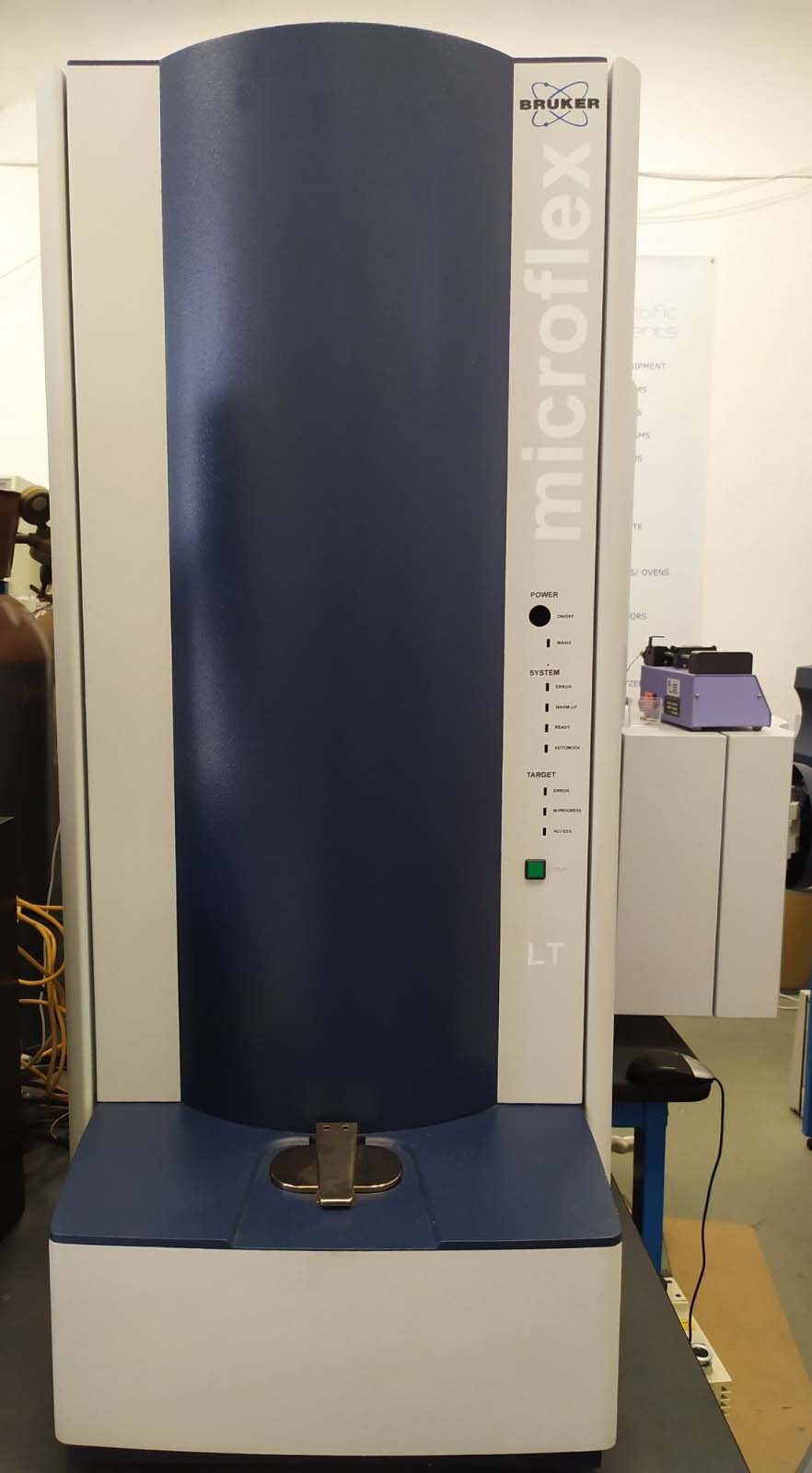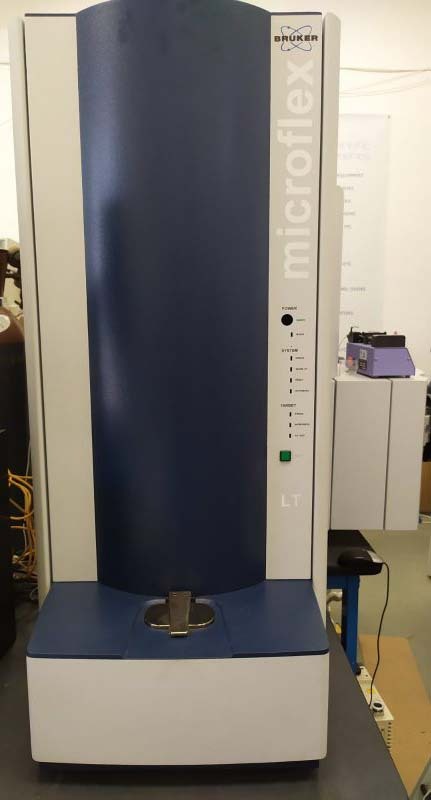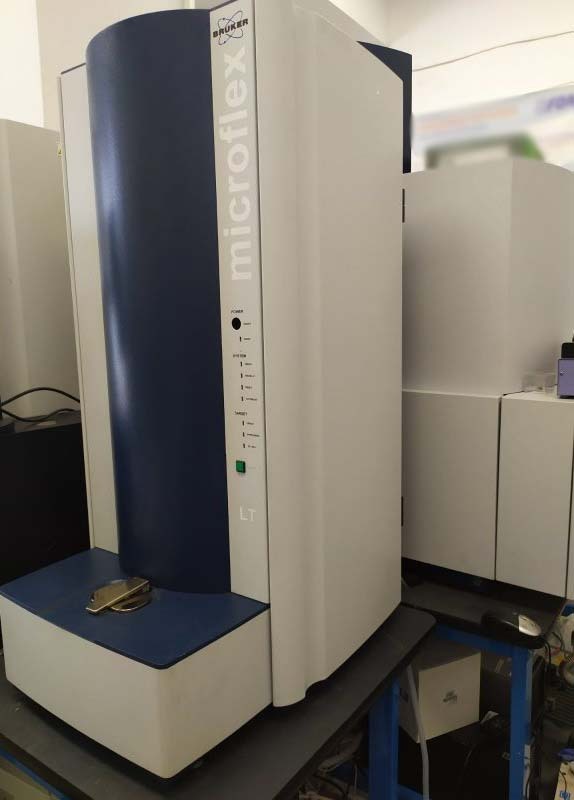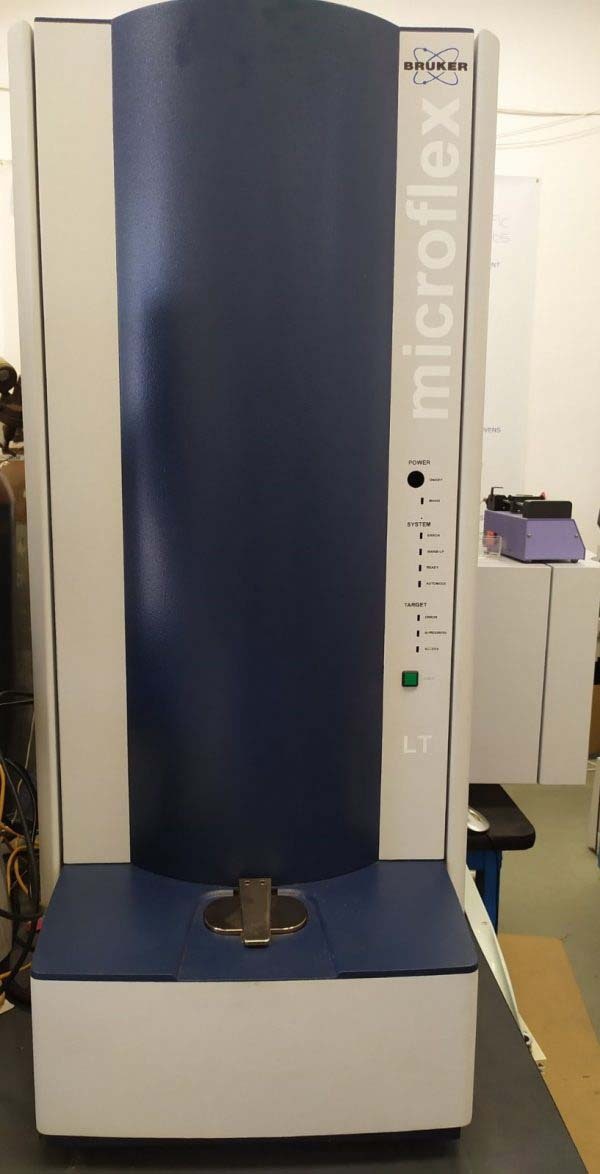Used BRUKER-AXS Microflex #9304032 for sale
URL successfully copied!
Tap to zoom














ID: 9304032
LT/SH MALDI MS System
Video card
Serial ports
LCD Display monitor, 24"
Keyboard
Mouse
Barcode reader
MALDI Biotyper Compass
MBT Explorer module
MALDI Biotyper (MBT) Compass library
Mycobacteria library
MSP 96 target polished steel BC
PC: HP Z440 with digitizer
Operating system: Windows 10.
BRUKER-AXS Microflex is a high-performance spectrometer designed for the characterization of proteins and proteins complexes, using the technique of small-angle X-ray scattering (SAXS). The spectrometer consists of four main components: a rotating anode X-ray source, X-ray optics and detectors, a sample environment, and a high-performance computer and software. The rotating anode X-ray source is composed of an X-ray tube enclosed in a vacuum tank, capable of generating X-rays with energies ranging from 8 to 18 keV. This X-ray tube is mounted onto a rotation stage that acts like a diffractometer, allowing for rotating the X-ray source to measure the scattering profile. The X-ray optics used in Microflex Spectrometer are composed of a set of mirrors, lenses and filters to optimize the incident X-ray beam intensity and produce an X-ray spot with a size of approximately 400x400 microns. This X-ray spot is then used to measure the scattering of proteins and protein complexes in a sample environment, which is usually a low-pressure N2 atmosphere suitable for the scattering measurement of protein at low temperatures. The detectors used in BRUKER-AXS Microflex are highly sensitive high-resolution detectors suitable for measuring both small- and wide-angle X-ray scattering (WAXS) profiles. The detectors comprise three-dimensional linear laser triangulation sensors, which can be operated in combination with digital imaging sensors and (optionally) chromatic filters. To enable the combination of WAXS and SAXS, the system is equipped with a sample environment responsible for adjusting the sample temperature and atmosphere for both form factors. Microflex Spectrometer is complemented with a powerful computer and software to enable an easy data collection and analysis. The package includes an exhaustive dataset relating to the scattering profiles, which is used to generate scattering curves. Additionally, the user is provided with automated procedures designed to collect, analyze, and store data efficiently, as well as a graphical user interface allowing to set up advanced experiments with ease.
There are no reviews yet






